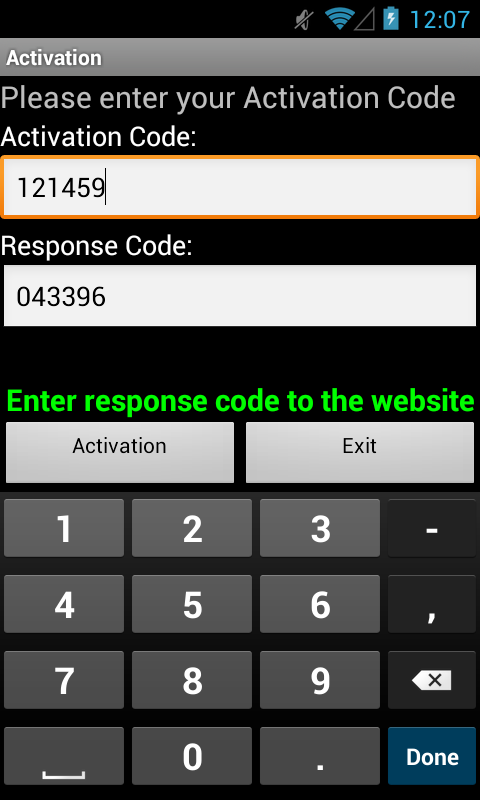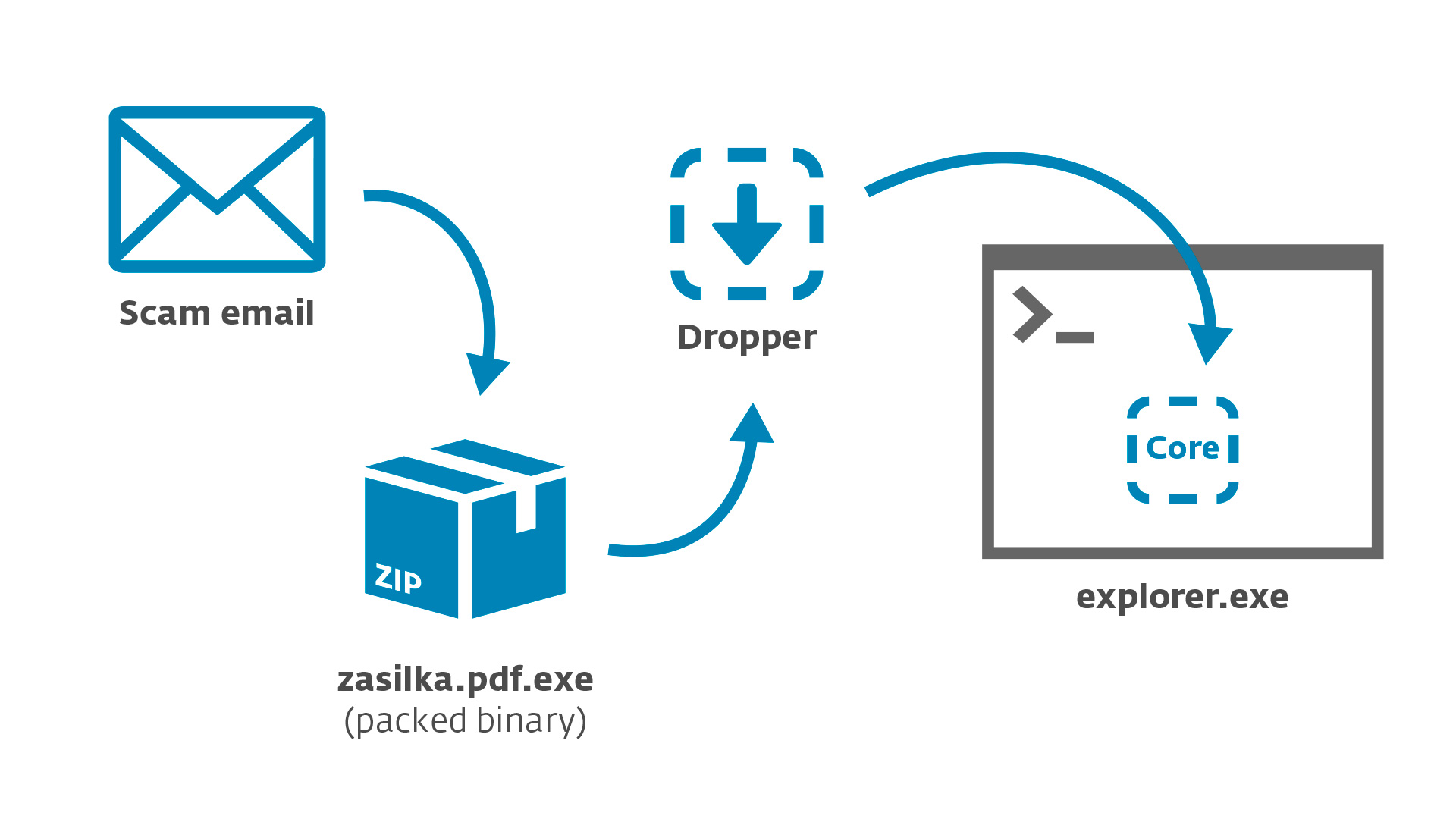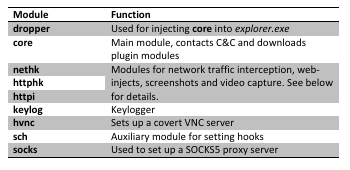Win32/Spy.Hesperbot is a new banking trojan that has been targeting online banking users in Turkey, the Czech Republic, Portugal and the United Kingdom. For more information about its malware spreading campaigns and victims, refer to our first blog post. In this post we’ll cover the technical details of the malware, including the overall architecture, as well as the mobile component. The Trojan is analyzed in three blog posts: Hesperbot - A New Advanced Banking Trojan in the Wild, Hesperbot Technical Analysis Part 1/2 and Hesperbot Technical Analysis Part 2/2. You can download the comprehensive whitepaper here.
Overview
Like many other malware families, Win32/Spy.Hesperbot has a modular architecture. As the first step in infection, the victim downloads and runs a dropper component. The dropper is also protected by a custom malware packer and distributed in a ZIP archive.
The dropper’s role is to inject the main component – ‘core’ – into explorer.exe. The core then downloads and loads additional modules, plug-ins used to carry out malicious actions.
The various modules are available both as x86 and x64 variants according to the host system platform.
Selected internal functions of individual modules are available for other modules to use through a virtual method table (vtable).
We have reverse-engineered the malware components and will highlight the most interesting features in the following paragraphs. Most malware components were compiled using Visual Studio 2010 and written in the C programming language, but without using the C Run-Time library. While this isn’t the most sophisticated malware we’ve analysed, Win32/Spy.Hesperbot can’t be dismissed as amateurish.
Main Modules
dropper
The dropper can use one of several methods for injecting the core component into the address space of explorer.exe:
- Starting a new instance of explorer.exe and patching its entry-point using NtGetContextThread to point to its own code (written using WriteProcessMemory). This can be done either directly or through an intermediate attrib.exe process.
- Injecting itself into the actual explorer.exe using the elaborate Shell_TrayWnd/SetWindowLong/SendNotifyMessage trick used in PowerLoader and other malware. (Aleks Matrosov has published multiple blog posts about it recently, so I won’t go into details here.)
- Injecting itself into explorer.exe using the common approach with CreateRemoteThread
Interestingly, the injection method is also based on whether the cmdguard.sys (Comodo) or klif.sys (Kaspersky) drivers are found on the system.
core
The core module, now running in the context of explorer.exe, handles communication with the C&C server and launching other plug-in modules. Typical malware functionality, such as writing to the Run Windows Registry key, is also handled by core.
In order to access the C&C server, Win32/Spy.Hesperbot.A uses either a hard-coded URL (different ones were seen in the variants used by the Czech, Turkish and Portuguese botnets) or generates new C&C URLs using a domain generation algorithm in case the first server is inaccessible.
The following information is sent to the command-and-control server:
- Bot name based on the Computer Name
- Botnet name – so far, we have seen “cz-botnet”, “tr-botnet”, “pt-botnet”, “uk-botnet” and “super-botnet” (used in early “beta” versions)
- IP addresses of present network adapters
- Names of active smart-cards
- Information about installed Hesperbot plug-ins
In return, the server can send:
- A configuration file
- Plugin modules
- An arbitrary executable to run
- A new version of itself
Several technical details regarding the abovementioned functionality are worth mentioning. Firstly, the malware is able to enumerate smart cards present in the system using the SCardEstablishContext, SCardListReaders and SCardConnect API functions. Unlike more sophisticated attacks against smart cards (described by Aleks here and here), Win32/Spy.Hesperbot only collects smart-card names and doesn’t contain the ability to interact with them.
Secondly, the downloaded data (namely the configuration file and plugin modules) is encrypted using the Twofish cipher. The 256-bit key is a hash based on:
- Computer Name
- [HKEY_LOCAL_MACHINE\SOFTWARE\Microsoft\Windows NT\CurrentVersion] "InstallDate"
- Windows version
- Processor architecture (x86, x64 or IA64)
- [HKEY_LOCAL_MACHINE\SOFTWARE\Microsoft\Cryptography] "MachineGuid"
- [HKEY_LOCAL_MACHINE\SOFTWARE\Microsoft\Windows NT\CurrentVersion] "DigitalProductId"
For storing the downloaded data as well as other auxiliary binaries (e.g. the log created by the keylogger module), Hesperbot uses a randomly named subdirectory under %APPDATA%.
The core module can inject itself into all running processes. Furthermore, an undocumented trick of hooking UserNotifyProcessCreate is used when running inside csrss.exe, to ensure that the trojan’s code will be injected into every new process.
Mobile Component
It’s common nowadays that banking trojans also utilize mobile components (like ZitMo and SpitMo, for instance) in order to bypass banks’ out-of-band authentication through mTANs (Mobile Transaction Authentication Number).
In the web-inject scripts that we have seen so far, the malware injects code into the website, which prompts the user to install an application on their mobile phone. The victim is offered a dropdown list of phone models and after entering their phone number a link to download the mobile component is sent to their phone. Three mobile platforms are supported: Android, Symbian and Blackberry.
We have analysed the Symbian and Android versions, but haven’t so far been able to obtain the Blackberry malware. The Symbian version supports a broad range of devices, including Symbian S60 3rd edition, Symbian S60 5th edition and the latest Symbian^3.
Both of the analysed mobile trojans exhibit similar functionality. First, there is an “activation procedure”. The web-inject JavaScript on the Hesperbot-infected computer generates a random “activation number”, which is displayed to the user. The user is supposed re-type the number when prompted by the mobile application. The mobile app then displays a “response code”, which is calculated from the activation number. The user is then asked to enter it back into the webpage on their computer for verification. (The injected script contains the same algorithm for calculating the response code as in the mobile component.) This functionality provides the attackers confirmation that the victim has installed the mobile component successfully and ties it with the bot infection.

Screenshot of Android component – Android/Spy.Hesperbot.A
As expected, the code, both in the Symbian and Android versions (and likely in the Blackberry version as well), registers a service that waits for incoming SMS messages and forwards them to the attacker’s phone number. This way the attacker will get the mTAN necessary for logging into the hijacked bank account.
The mobile code also implements the attacker’s ability to control the service remotely through SMS commands.
The Android component is detected by ESET as Android/Spy.Hesperbot.A and the Symbian version as SymbOS9/Spy.Hesperbot.A.
Other Functionality
Keylogger
The keylogger module intercepts key strokes by hooking the functions GetMessage and TranslateMessage in user32.dll. They are then written to a log file, along with the originating process module name and window title text. Afterwards, the log gets sent to the C&C server.
Screenshots and Video Capture
The screenshots and video capture is done by the httpi module, if specified in the configuration file.
The video capture functionality has been used by the Zeus banking trojan spin-off Citadel and provides the attackers with an even better overview of what’s happening on the victim’s screen. It’s implemented using Avifil32.dll functions AVIFileCreateStream, AVIFileMakeCompressedStream, AVIStreamWrite, etc.
The more common screenshot functionality is implemented using the Gdi32.dll functions BitBlt, GetDIBits, etc.
Hidden VNC
The VNC functionality has previously been used in the infamous Carberp malware. (In fact, Carberp may have also been an inspiration to the Hesperbot creators after its source code leak.) It enables the trojan to create a hidden VNC server, to which the attacker can remotely connect. As VNC doesn’t log the user off like RDP, the attacker can connect to the unsuspecting victim’s computer while they’re working. The VNC session runs in a separate desktop (see CreateDesktop on MSDN), invisible to the user. The module also provides the attacker with the capability to launch a browser that’s installed on the host system. In this way, the attacker will also have access to all browser-associated data (cookies, sessions, etc.).
In our 3rd blog post on Win32/Spy.Hesperbot, we will cover the technical details regarding the network interception and web-inject functionality. Stay tuned.









